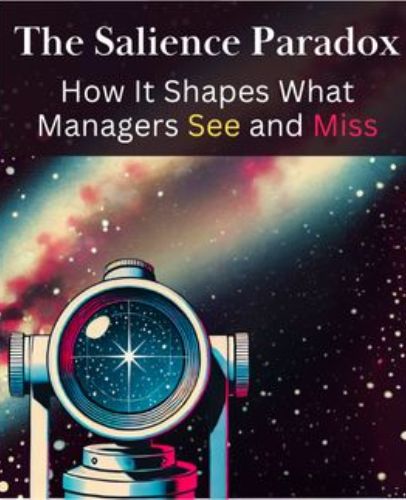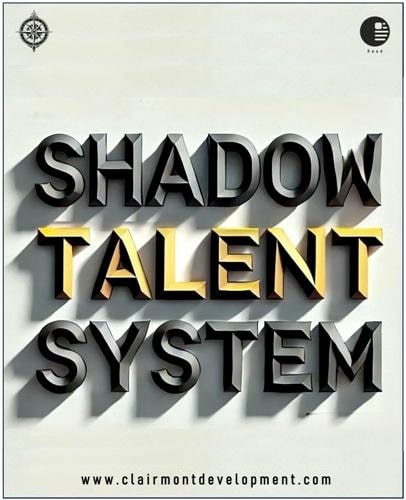The Curriculum We Forgot and the Case for On-the-Job Learning
The Curriculum We Forgot and the Case for On-the-Job Learning
If real growth happens in the messy, high-stakes crucible of actual work, why are we still treating development as something separate from it?
Professional development isn’t forged in workshops. It’s shaped in crisis calls, client losses, and critical decisions. And yet in most organizations, L&D remains sidelined from the moments that matter most.
We simulate. We script. We sanitize. But judgment isn’t taught, it’s tempered. And no simulation can replicate the sleepless night before a turnaround presentation.
What if we stopped outsourcing learning to external modules and started designing for it inside the work itself?
Friction is not the enemy of learning, it’s the fuel. I believe that the role of L&D is not just to create content, but to create conditions. And that the best curriculum might already exist… embedded in your workflow.
In my research, I explored what senior leaders consider meaningful leadership development experiences, particularly in how they assess succession readiness. Unsurprisingly, many referenced experiential learning moments and real-time challenges that shaped their growth. I can say the same about my own development.
Yet, from an organizational perspective, development through real work is often treated as an afterthought rather than a core talent development strategy.
If we agree that the most powerful learning happens through real work assignments and leadership-in-contex, shouldn’t we be more deliberate in how we embed those experiences into talent strategies?
This got me considering the differences between organic (workplace activities) and synthetic (training interventions) experiences and what’s at stake when we undervalue the former.
The following will look at a few key areas of talent development.
The Development Paradox
While senior leaders consistently cite on-the-job development and real work as their most valuable development, organizations continue to overinvest in synthetic training while underutilizing the power of organic workplace learning.
This contradiction points to a systemic bias: convenience and control are prioritized over depth and transformation.
The Neural Imprints of Experience
Research shows organic experiences create deeper, more lasting development by engaging broader brain networks including the amygdala, insula, and default mode network which are critical for developing adaptive leadership capabilities.
Synthetic learning environments primarily engage the hippocampus and prefrontal cortex, regions tied to rule-based reasoning. But organic experiences activate the amygdala, insula, and the default mode network -regions responsible for emotional salience, intuition, and reflection.
Real learning often occurs when these deeper networks are engaged during emotionally charged, high-stakes work.
The Manager as Learning Architect
The most powerful learning interventions aren’t designed by HR but through a manager’s deliberate use of real work as a developmental tool through strategic assignments, real-time coaching, and structured reflection.
Managers must be upskilled to design learning into the flow of work, recognizing moments for reflection, shadowing, and strategic exposure.
Strategic Alignment
Talent professionals who break down the artificial boundary between formal learning and development in the flow of work unlock a competitive advantage by creating cultures that learn faster, adapt smarter, and build leadership capacity continuously.
What We Miss When We Simulate Leadership Development
In the effort to modernize corporate learning, simulations, VR, and gamified learning experiences have taken center stage. These synthetic experiences are deliberately designed, controlled, and often impressive in production value.
They are touted as scalable, immersive, and efficient. But stretch assignments for growth like leading a turnaround or navigating client crises often deliver deeper, more lasting development than any simulation.
But there is a potential downside, in our pursuit of replicability, scalability and efficiency, we’re also inadvertently not actively using the most powerful element of development: organic experiences.
When it comes to human development, particularly in areas like leadership, judgment, and interpersonal influence, what matters most isn’t just the realism of the setting. It’s the stakes, the messiness, and the context.
The Rise of the Machines in Corporate Training
Synthetic learning experiences are powerful in their own right.
They allow us to train at scale, compress time of training, and measure engagement and performance.
From decision-making simulations to AI-powered coaching bots, synthetic environments are built on the premise that we can accelerate learning by removing noise.
But in doing so, we often remove the very friction that makes learning stick.
Studies show that simulations and virtual modules are highly effective for procedural learning and initial competency development (Grant, 2021; Ferguson, 2022).
Yet even proponents of tech-enabled learning acknowledge that their power lies more in readiness than in depth of transformation.
The Neural Imprints of Experience
These are the high stakes learning moments that encode memory, not simulations.
From a neurological development perspective, the way our brain processes synthetic (simulated, controlled) vs. organic (real-world, unstructured) experiences in corporate training has large implications for learning retention, emotional engagement, and the ultimate goal of behavioral change.
Synthetic learning environments primarily engage the hippocampus and prefrontal cortex, responsible for working memory, decision-making, and rule-based reasoning (Badre & D’Esposito, 2009).
These regions excel at encoding structured, low-ambiguity information.
However, such environments often result in fewer dopaminergic spikes, reducing the emotional salience of the learning (Schultz, 2000).
In contrast, organic experiences activate a broader network: the amygdala (emotion), insula (intuition), and the default mode network (DMN) responsible for self-reflection and meaning making (Raichle et al., 2001).
High-stakes emotionally charged situations enhance memory consolidation through emotional tagging in the amygdala-hippocampus pathway (McGaugh, 2004).

In addition, organic experiences engage the mirror neuron system, key to empathy, imitation, and interpersonal learning (Rizzolatti & Craighero, 2004). These interactions are often missing in simulations, which limit non-verbal cues and social resonance.
Why We Overlook Organic Experience
Despite its immense value, organic learning often goes underutilized not because it lacks impact, but because it lacks convenience.
Real work, with all its ambiguity and messiness, doesn’t fit neatly into LMS platforms or standardized KPIs that get reported on. Several forces contribute to its neglect:
- Time constraints: Leaders and managers often default to pre-packaged solutions because designing learning from live work feels too complex or slow.
- Competing priorities: Deliverables and performance pressures leave little room for deliberate reflection or structured development.
- Risk aversion: Assigning real responsibility can feel risky… what if someone fails?
- Measurement bias: Synthetic learning is easier to track, score, and report. Organic development, in contrast, often produces its returns in trust, insight, and reputation metrics that don’t show up on a dashboard.
We also face a mental hurdle that “real work” and “training” are two separate domains.
But the most effective development happens when those domains overlap.
The workplace becomes the curriculum. The manager becomes the coach. And the task becomes the test.
The workplace becomes the leadership development lab. The manager becomes the learning architect and performance coach.
The Case for Organic Experience in On-the-Job Development
Real work is the most underleveraged training ground in organizations today.
On-the-job training remains the most underleveraged development ground in organizations today.
Organic experiences are unpredictable, contextual, and often uncomfortable. They are not neat case studies but lived tension… and tension leads to growth.
As Adam Grant might put it, they activate cognitive complexity. Research on experiential learning confirms that real-time, high-stakes experience is far more likely to produce adaptive expertise and deeper leadership insight (Kolb, 1984; McCall, Lombardo & Morrison, 1988).
Organic experiences don’t just teach content, they build character.
While firms spend millions designing offsites and modules, the most profound learning often happens in the “flow of work” when the heat is on, stakes are high, and time is short.
- Assigning an up-and-coming talent to lead a client turnaround isn’t just exposure, it’s about immersion.
- Embedding high-potentials into cross-border negotiations gives them a geopolitical education no case study can rival.
- Asking junior staff to co-lead a strategic review makes them wrestle with trade-offs that even simulations can’t replicate.

The workplace is a living case method that is ever-evolving, emotionally charged, and filled with unrepeatable moments of insight.
It is the only place where reputation, risk, and relationships intersect.
That combination builds not only competence, but credibility.
In fact, recent studies argue that on-the-job learning drives both performance and retention more effectively than formal training interventions (DeRue & Wellman, 2009).
In one longitudinal analysis, close to 80% of meaningful leadership development was attributed to challenging job assignments, classic examples of OJT, rather than coursework (McCall et al., 1988).
Related Article: The Confidence Trap of the Dunning-Kruger Effect
Expanding the Talent Mandate for Experiential Development
If actual work is the most fertile ground for development, why do so many in talent functions hesitate to treat it as part of their domain?
In many organizations, talent development is still seen as separate from day-to-day operations and operate as an auxiliary function focused on programs, not performance. I would argue that this separation is a false boundary, if you believe in the value you provide.
Talent professionals should not be timid about stepping into the space of real work.
The conditions of work and its challenges, tensions, and turning points are exactly where values are tested, skills are stretched, and leaders are forged. Helping shape those conditions is not overstepping; it’s strategic alignment. Firms that embed L&D in the flow of work outperform those that silo it.
When talent development integrates more closely with the business, it unlocks a new level of value creation. It shifts the perception of talent development from support function to competitive differentiator.
The ability to learn faster, adapt smarter, and lead through ambiguity is what separates resilient firms from reactive ones. Talent development, when fully integrated, becomes a key feature of sustained competitive advantage.
So, How Do We Balance Them?
The answer isn’t to discard synthetic tools, but to recognize their limits. Balancing both requires designing for real-world learning in the workplace, where context, stakes, and emotional salience drive deeper development.
Most importantly, recognize that learning design isn’t neutral. The format shapes not just what people learn, but how they see themselves. If we want to develop courageous, adaptive, and values-driven professionals, we must place them in environments that allow for unpredictability, emotion, and consequence.
The Manager as Learning Architect in the Flow of Work
Managers sit at the frontlines of workplace learning. Their day-to-day choices on who gets the high-stakes project, who receives real-time feedback, who’s invited to shadow an executive are the building blocks of developmental culture.
But most managers haven’t been taught how to design learning experiences into the flow of work. Upskilling them to recognize “learnable moments,” ask coaching questions, and debrief after key events turns them into developmental multipliers.
The most powerful learning interventions don’t come from HR, they come from a manager’s calendar. Explore more here: Building Talent Incubators
Institutionalizing Reflection and Feedback
On-the-job talent development depends on reflection it’s how action becomes understanding.
Reflection is the neurological glue that turns experience into insight. Yet in fast-paced environments, it’s often skipped.
Organizations that are serious about learning through work invest in structured debriefs, peer coaching circles, and learning reviews. These rituals engage the brain’s default mode network, connecting the dots between action and identity.
Learning doesn’t just come from doing. It comes from making sense of the doing.
Bridging Performance Metrics with Leadership Development
One reason I see is that development often stays separate from actual work is due to the tension between performance and growth. Real development requires mistakes, feedback, and recalibration. Yet performance systems reward certainty, speed, and polish.
To unlock development through work, organizations must adopt a culture where employees are evaluated not just on outcomes, but on how they grow, adapt, and stretch in real time.
Performance without stretch becomes stagnation.
Have we mistaken convenience for development?
In a world obsessed with scale, the temptation is to over-engineer experience. But remember, the most defining lessons are often unplanned.
Build programs that leave room for the unexpected. Because what can’t be simulated might just be what matters most.
Shad Rogers, Ed. D
Talent Thought Leader
shad@clairmontdevelopment.com
References:
Badre, D., & D’Esposito, M. (2009). Is the rostro-caudal axis of the frontal lobe hierarchical? Nature Reviews Neuroscience, 10(9), 659–669.
DeRue, D. S., & Wellman, N. (2009). Developing leaders via experience: The role of developmental challenge, learning orientation, and feedback availability. Journal of Applied Psychology, 94(4), 859.
Ferguson, N. (2022). Doom: The Politics of Catastrophe. Penguin Press.
Grant, A. (2021). Think Again: The Power of Knowing What You Don’t Know. Viking.
Kolb, D. A. (1984). Experiential Learning: Experience as the Source of Learning and Development. Prentice Hall.
McCall, M. W., Lombardo, M. M., & Morrison, A. M. (1988). The Lessons of Experience: How Successful Executives Develop on the Job. Free Press.
McGaugh, J. L. (2004). The amygdala modulates the consolidation of memories of emotionally arousing experiences. Annual Review of Neuroscience, 27, 1–28.
Raichle, M. E., et al. (2001). A default mode of brain function. PNAS, 98(2), 676–682.
Rizzolatti, G., & Craighero, L. (2004). The mirror-neuron system. Annual Review of Neuroscience, 27, 169–192.
Schultz, W. (2000). Multiple reward signals in the brain. Nature Reviews Neuroscience, 1(3), 199–207.
***
Clairmont Advisors is a L&D training and consulting firm registered in Dubai, United Arab Emirates. We seek to understand the desired results based on organizational and personal perspective to draft bespoke training solutions and consultation services for UAE, Saudi Arabia, Qatar and other GCC countries.
The development of our solutions are based on both academic and applied experiences. Each engagement follows a disciplined approach to development, where the goals are discussed, expressed, and a clear methodology to determine success.
To learn more about our programs and consulting services visit our offerings page.








